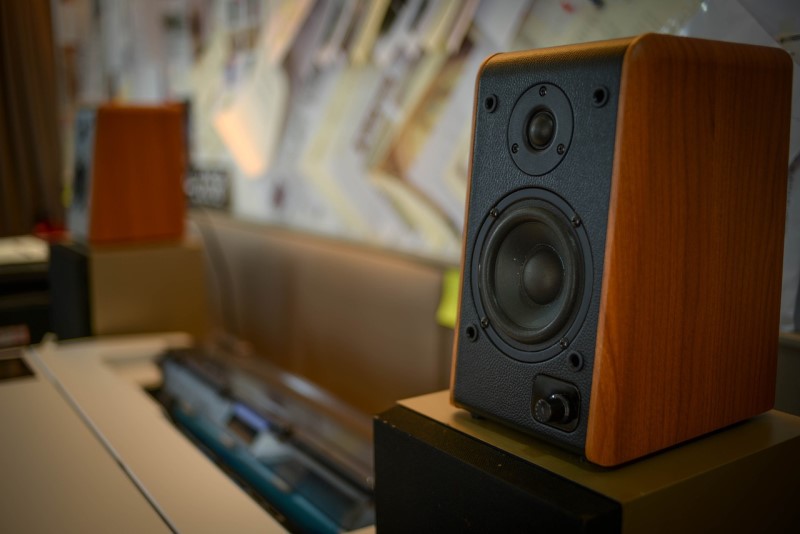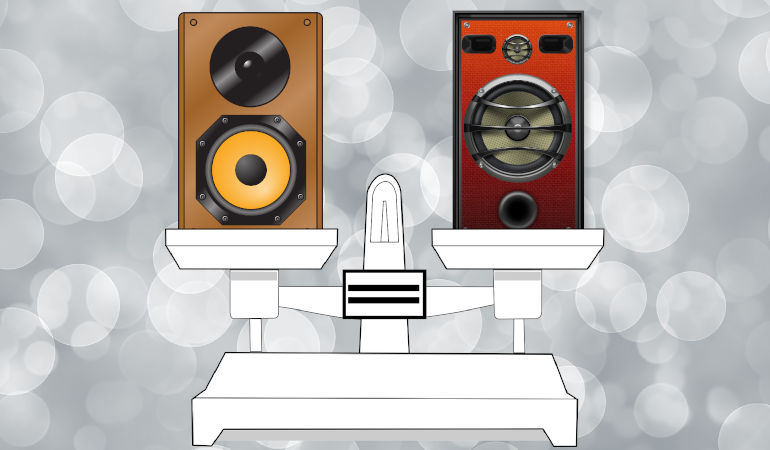Get The Best Speaker for Your Money: How to Test Bookshelf Speakers
We’ve talked about how to compare speakers around here before. We’ve also suggested (rather strongly) that we think you should buy bookshelf speakers. One thing we’ve never addressed is how to test bookshelf speakers properly. Unlike floorstanding speakers, there are very specific pitfalls that can affect how you perceive the quality of bookshelf speakers. If you aren’t careful, you might buy the worst-sounding speakers simply because you didn’t test them correctly. Let’s discuss!
Why Normal Testing Methodology Won’t Work
Generally speaking, when you test a speaker, you get a couple of pairs and play the same content through both. The ones that sound best are the ones you buy. Unfortunately, this doesn’t work as well with bookshelf speakers. When you are testing any speaker, including bookshelf speakers, people tend to play them full range. This means they use only the speakers, not their subwoofer(s).
Of course, this makes sense. You want to hear the speakers and nothing else. Unfortunately, you run directly into a psychoacoustic problem: Bass. No matter if you are brand new to audio or a seasoned enthusiast, the speaker with the most bass will “win” in your mind. We are programmed to prefer the speaker with the most bass. Even armed with this knowledge, you won’t be able to help yourself. You won’t be able to concentrate on the treble and midrange and ignore the bass. The speaker with the most bass will come out on top.
Manufacturers know this and will design speakers (especially lower-cost options that don’t care about linearity) with purposeful bass boosts. This can and does trick buyers into preferring a speaker that isn’t as good simply because it has the most bass. After they live with the speaker for a while, they’ll complain about listener fatigue and other issues that are caused by their poor-performing speaker.

Just Add In Your Subs?
The simple solution is to set your crossover and add back in your subwoofers. This would level the playing field as all the bookshelf speakers you are testing would have the same bass. The problem, again, is the bass. While you are technically giving all the speakers the same bass, you are obfuscating the performance of the speakers. What you should really be testing is the midrange and treble of the bookshelf speakers. As we’ve explained, crossovers aren’t brick walls. Your subwoofer is playing much higher than you expect which will mask any deficiencies with the lower-end performance of a speaker. No, the answer is stupider than you think.
How to Properly Test Bookshelf Speakers
To properly test bookshelf speakers, you need to hear JUST the speaker. At the same time, you don’t really care about the low-end extension of the speaker. You just need to know that the speaker can play low enough to blend in with your subwoofers. The answer is clear: you need to set your crossover but turn your subwoofers off!
To start with, we’d suggest you set your crossover very high. If you can, set it to 200Hz. This will allow you to test your bookshelf speakers playing primarily treble and midrange. Yes, 200Hz will be more bassy than you expect. The idea is that you will be comparing the speakers in the frequency range where they will be solely responsible. If you normally set your crossover to around 80Hz, then your subwoofers won’t be playing at all up at 200Hz.
Once you’ve set your crossover, you’ll want to turn off your subwoofers. You just want to hear the bookshelf speakers and nothing else. Later, you can lower the crossover if you want but remember that bass is much more affected by your room than the higher frequencies. Focusing on the higher frequencies will allow you to hear the speaker’s true performance without the distraction of the lower bass. This will ensure you get the best bookshelf speaker.


